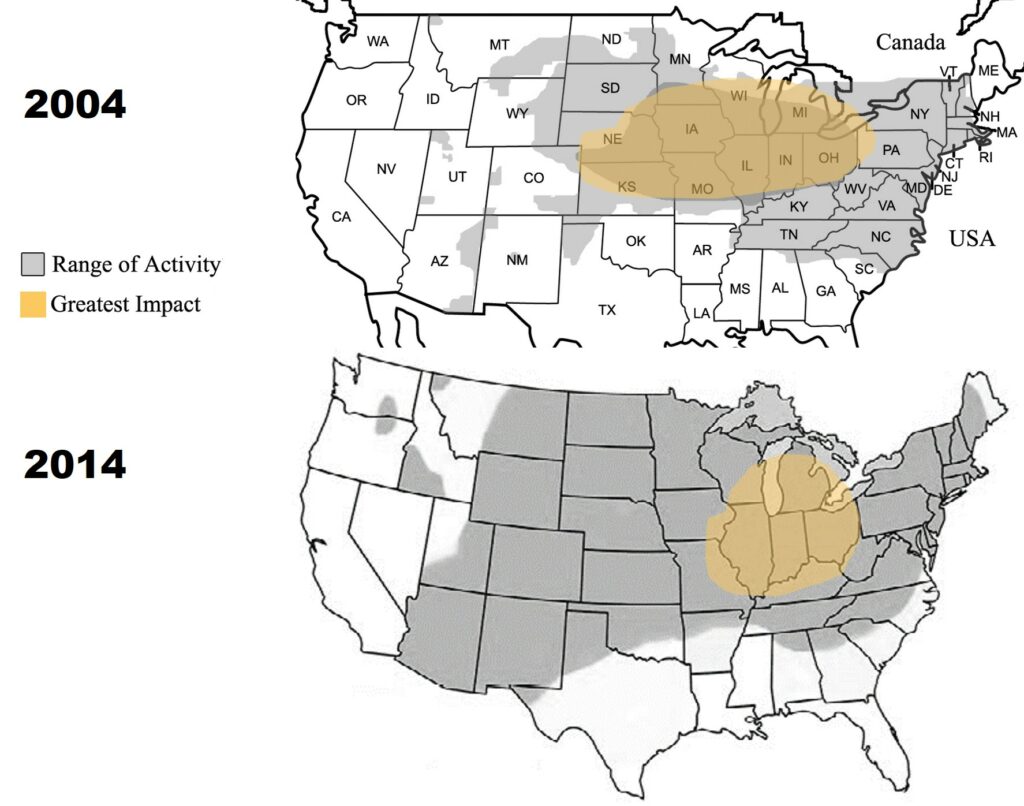
Western Corn Rootworm (WCR) is considered the most important corn pest in the U.S.1 . Most of this damage occurs in the Midwest, where corn acreage dominates the landscape. Over the last 50 years, farmers have used cultural, genetic, and chemical control strategies to lessen the effect of WCR and protect yields.
In comparison, the PNW produces a very small amount of corn (<5% of all regional farmland). Therefore, western corn rootworm has not been a problem for us so far2, and growers are much more accustomed to 12-spots (which is a western variant of the southern corn rootworm – confused yet?!)
Regardless of the species, rootworm damage is similar: larvae chew on roots, which can cause lodging or goosenecking. Adult beetles attack foliage and can clip silk (corn) or chew on blooms (squash) or pods (beans) if populations are high enough.

Q: So why mention WCR if it’s not yet a problem here?
A: This species is worth monitoring because it has been moving westward for the past 10+ years, and could become more abundant if corn production increases in the PNW. Yellow sticky traps are great passive sampling tools for many pests, so in short…might as well.
Also, the Oregon Dept. of Agriculture (ODA) asked us to conduct a preliminary distribution survey of D. D. virgifera in the PNW, both in field corn and sweet corn. You can read more about that project here: http://bit.ly/CRWinOR

RESOURCES:
- Gray, M. E., Sappington, T. W., Miller, N. J., Moeser, J., & Bohn, M. O. (2009). Adaptation and invasiveness of western corn rootworm: Intensifying research on a worsening pest. Annual Review of Entomology 54: 303-321.
- Murphy, A., Rondon, S., Wohleb, C., and S. Hines. (2014). Western corn rootworm in eastern Oregon, Idaho, and eastern Washington. PNW Extension Publication 662. 7 pp.










